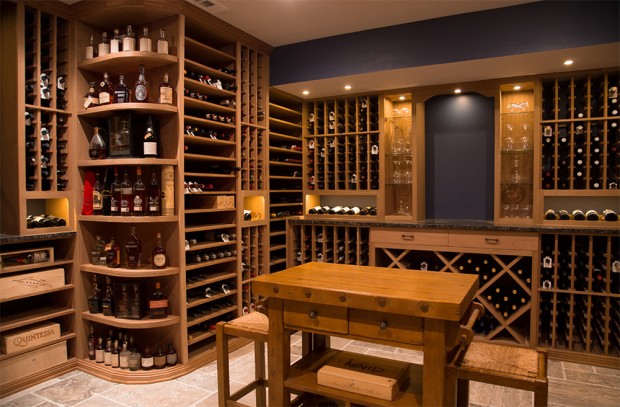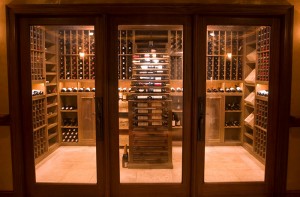Wine Cellar Designer in Virginia- The science behind building a custom wine rooms and wine cellars in Virginia
The foundation of building a custom wine cellar in Maryland, Virginia, and Washington DC, is in the actual construction of the space to the proper standards for energy efficiency. Insulation, vapor barriers, and refrigeration are the keys to building a wine cellar that will protect your wine investment for years to come. Even many builders who are doing their first couple of wine cellars do not understand these concepts since they are building a cold room that follows thef opposite rules of building standards. Understanding the local climate of Maryland and Virginia is first important step in selecting the right materials for use in your custom wine cellar room. Our wine cellar designers in Maryland, have been creating custom wine cellar rooms for clients since 2001.

Wine Cellar Insulation – thoughts from a wine cellar designer in Virginia since 2001.
There are many kinds of insulation on the market today. While each of these products has benefits for a specific application, we feel that using some of the newer advanced insulation methods have made building wine cellars a worry-free project. Almost every failed wine cellar is due to improper insulation and vapor barriers. One must remember that you are building a walk-in refrigerator in your home. Many conventional insulation and vapor barrier applications are misunderstood and can lead to failed cellars.
We strongly advise against using fiberglass and 6-mil plastic that many websites advertise as a standard of construction.
Remember what might work in California, or Colorado, will not work for our local area of Washington DC area wine cellars. It is essential that your wine cellar designer understands this, to allow your wine cellar to function correctly for our local environment in Maryland.
Vapor Barriers
Why is the placement of the vapor barrier so important? Proper installation of the vapor barrier is important due to the fact that most wine cellars draw vapor pressure from the outside into the wine cellar. If the Vapor Barrier is not installed properly humidity in the air will condense inside your walls and form moisture over time. Once this happens mold and mildew will begin grew.
Wine Cellar Refrigeration – the most important part of working with any wine cellar designer in Virginia

Providing your room with proper humidity and cooling to protect your fine wine investment, should be a major concern. The use of proper refrigeration equipment is essential for providing years of a worry-free investment. All to often, consumers purchase a wine cellar cooling system from an untrained wine cellar designer in Virginia. Proper sizing by any wine cellar designer in Virginia is essential. Wine cellar cooling systems MUST BE sized properly.
Classic Cellar Design calculates each wine cellar in-house to run wine cellar cooling loads for all of our rooms. All to often cooling units are sized by cubic feet and not actual BTU load. This can lead to many problems down the road and costly mistakes. Do you really think a room on the second floor of a home in Arizona? is the same as a wine cellar room located in a basement here in Washington, DC. NO WAY, ALL WINE CELLARS SHOULD BE SIZED BY HEAT LOADS NOT CUBIC FEET.
Whether you are ordering kit racking from the Internet or having a custom wine cabinetry built and installed, it is essential to understand the principles behind wine cellar environments. Contact our wine cellar designer in Virginia to get specific information on the sizing and needs to your wine cellar cooling equipment today.
Classic Cellar Design provides consulting services directly to end user ie … homeowners, to ensure that proper building techniques are followed.
Contact us for further information on the science of building a wine cellar.
Classic Cellar Design
Ste D,
Email: classiccellar@gmail.com
